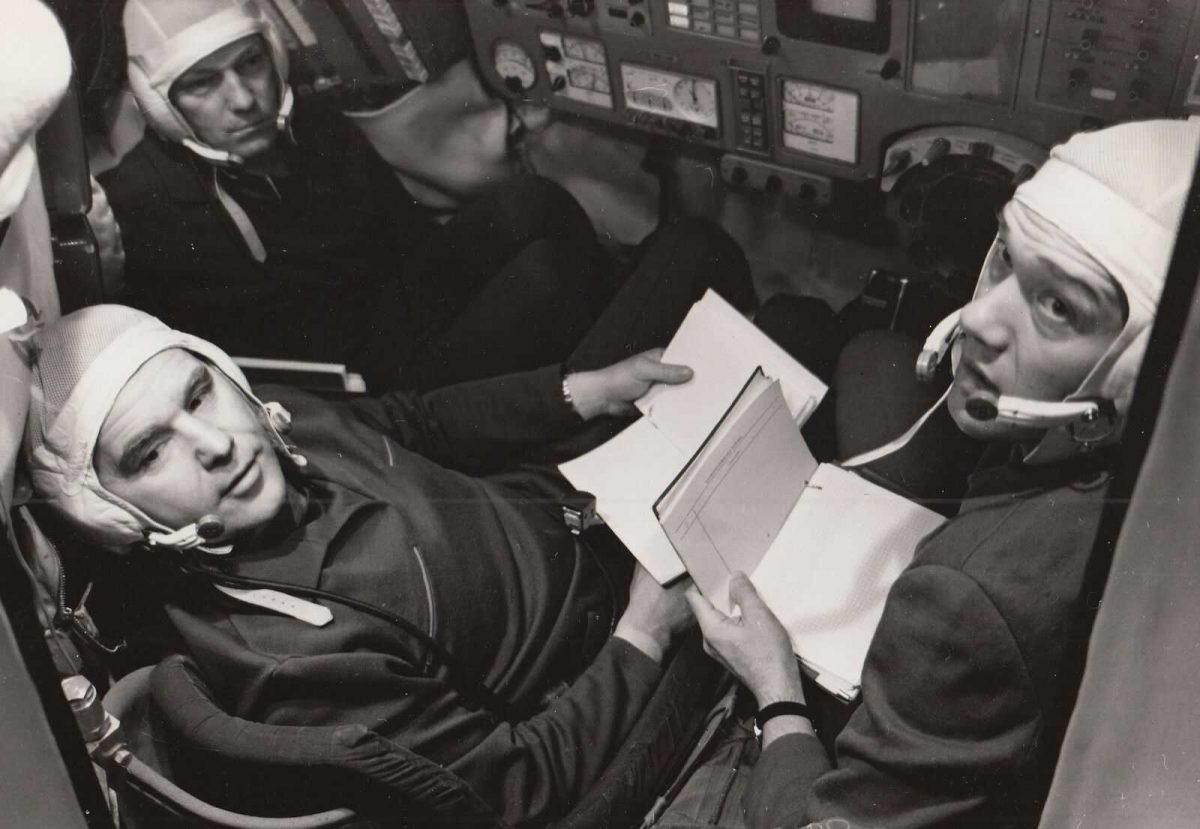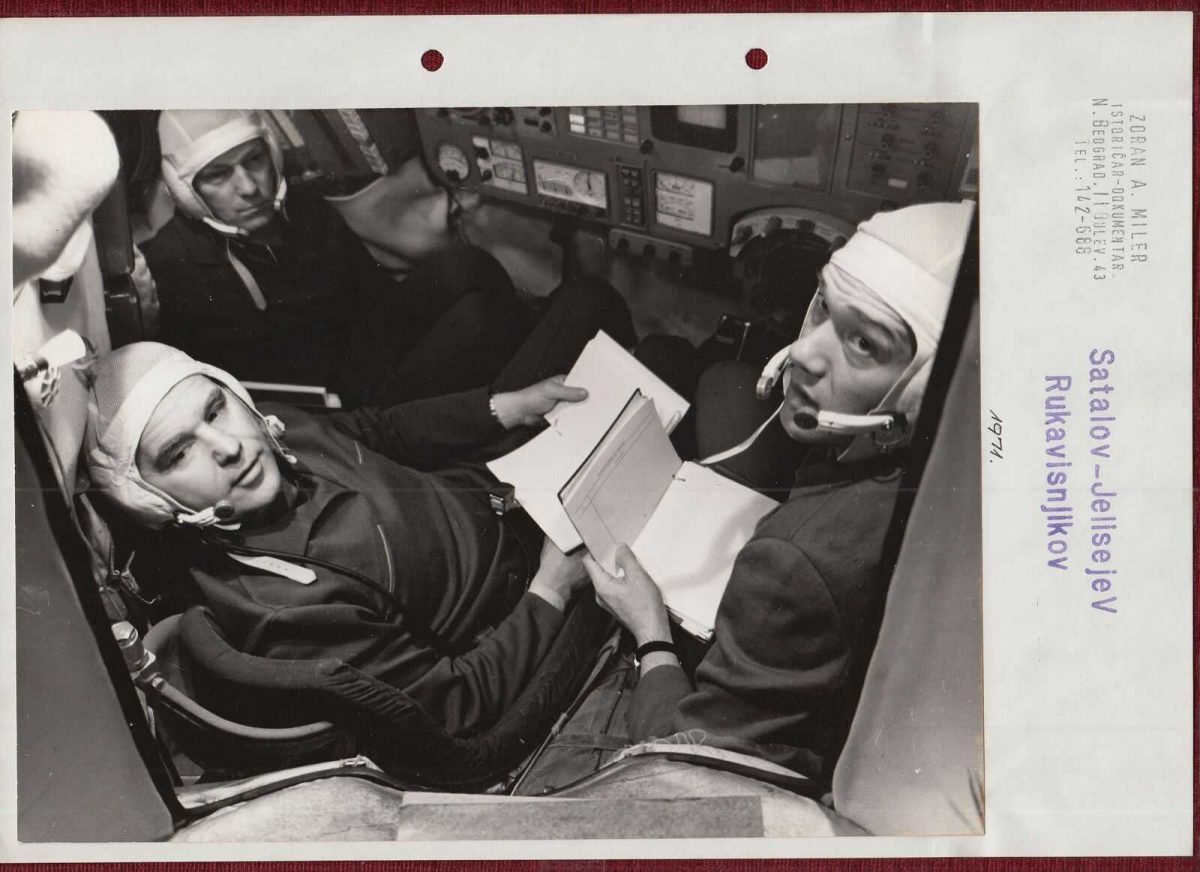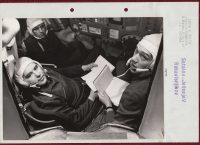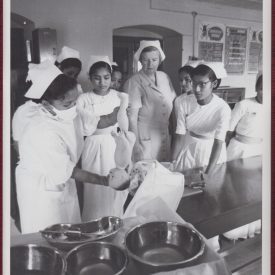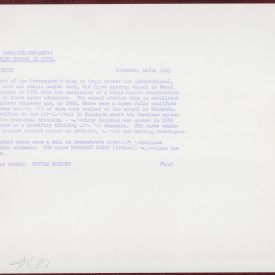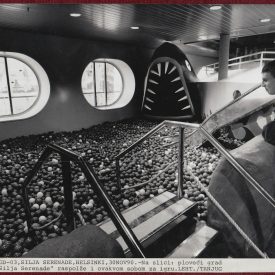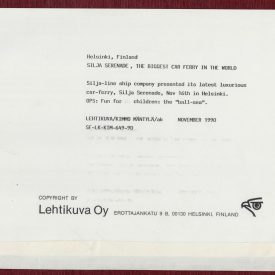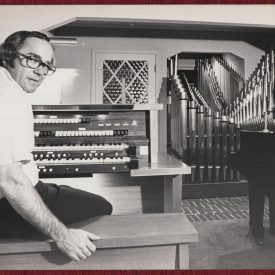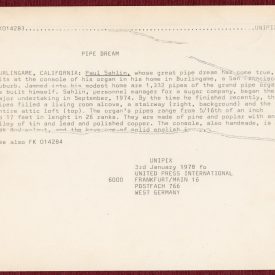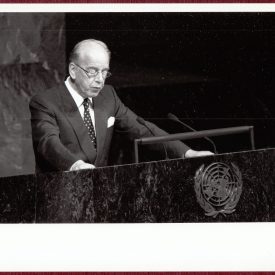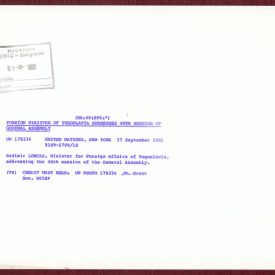1971 ORIGINAL APN PHOTO
SOYUZ 10 CREW
Vladimir Shatalov (the commander), Aleksei Yeliseyev and Nikolay Rukavishnikov.
Moscow, April 1971.
APN PHOTO
***
Size (photo): 23, 9 x 18 cm.
***
Attached to a paper on the edge of the photo. Because of this we couldn’t scan the whole back side of the photo.
For the condition and details see the scan.
***
From Wikipedia, the free encyclopedia:
Soyuz 10 (Russian: ???? 10, Union 10) was a 1971 Soviet manned mission to the world’s first space station, Salyut 1. The docking was not successful and the crew returned to Earth without having entered the station.
Mission highlights
Soyuz 10 and Salyut 1 docked together in another unfortunate attempt
Soyuz 10 was launched 23 April 1971. Although the upgraded Soyuz 7K-OKS, featuring a new docking system, successfully brought cosmonauts Vladimir Shatalov, Aleksei Yeliseyev, and Nikolai Rukavishnikov to the station, they could not dock with it. While the Soyuz physically locked onto Salyut, the connection was not secure enough for the cosmonauts to enter the station safely.[1]
It appeared that the hatch inside the Soyuz was jammed. This led the Soyuz having difficulty detaching from the station when the mission was called off. One last hitch presented itself upon re-entry when the capsule became filled with toxic fumes, causing Rukavishnikov to pass out.
All three crew members recovered from the ordeal unscathed.
Crew
Position Cosmonaut
Commander Vladimir Shatalov
Third spaceflight
Flight Engineer Aleksei Yeliseyev
Third spaceflight
Test Engineer Nikolai Rukavishnikov
First spaceflight
Backup crew
Position Cosmonaut
Commander Aleksei Leonov
Flight Engineer Valeri Kubasov
Test Engineer Pyotr Kolodin
Reserve crew
Position Cosmonaut
Commander Georgi Dobrovolski
Flight Engineer Vladislav Volkov
Test Engineer Viktor Patsayev
Mission parameters
Mass: 6,800 kg (15,000 lb)
Perigee: 209 km (130 mi)
Apogee: 258 km (160 mi)
Inclination: 51.6°
Period: 89.1 min.
***
Vladimir Aleksandrovich Shatalov (Russian: ???????? ????????????? ???????; born December 8, 1927 in Petropavlovsk) is a former Soviet cosmonaut who flew three space missions of the Soyuz programme: Soyuz 4, Soyuz 8, and Soyuz 10.[1]
From 1971 to 1987 he was Commander of Cosmonaut Training, and Director of the Cosmonaut Training Centre from then until 1991.
Quote: “When we look into the sky it seems to us to be endless. We breathe without thinking about it, as is natural… and then you sit aboard a spacecraft, you tear away from Earth, and within ten minutes you have been carried straight through the layer of air, and beyond there is nothing! The ‘boundless’ blue sky, the ocean which gives us breath and protects us from endless black and death, is but an infinitesimally thin film. How dangerous it is to threaten even the smallest part of this gossamer covering, this conserver of life.
***
Aleksei Stanislavovich Yeliseyev (Russian: ??????? ????????????? ???????; born July 13, 1934 in Zhizdra) is a retired Soviet cosmonaut who flew on three missions in the Soyuz programme as a flight engineer: Soyuz 5, Soyuz 8, and Soyuz 10.
A graduate of the Bauman Higher Technical School (1957) and postgraduate of Moscow Institute of Physics and Technology (1962). Yeliseyev worked as an engineer in Sergey Korolev’s design bureau before being selected for cosmonaut training.[1]
Following his retirement from the space programme in 1985, he took up at an administrative position at the Bauman school for several years before retiring fully.
Aleksei Yeliseyev was awarded the Hero of the Soviet Union on two occasions (January 22 and October 22 of 1969). He was also awarded the Order of Lenin twice.
***
Nikolay Nikolayevich Rukavishnikov (Russian: ??????? ?????????? ????????????; September 18, 1932, Tomsk – October 19, 2002) was a Soviet cosmonaut who flew three space missions of the Soyuz programme: Soyuz 10, Soyuz 16, and Soyuz 33. Two of these missions, Soyuz 10 and Soyuz 33 were intended to dock with Salyut space stations, but failed to do so.
Rukavishnikov studied at the Moscow Engineering and Physics Institute and after graduation worked for Sergey Korolev’s design bureau. He was selected for cosmonaut training in 1967.
He became the 50th human to fly in space on April 23, 1971, the launch date of Soyuz 10.
He resigned from the space programme in 1987 and returned to work for the same bureau he started with, by then known as Energia.
He died of a heart attack on October 19, 2002.


